« The Life and Death of Hiphop Beatdigging | Home | Music Lovers vs. Audio Lovers »
18 Musical Innovations We Can Thank African Americans For
Post By: Alan
Without African Americans, there is no American music. Some of the most raw, energetic, complex, and groundbreaking music that has ever been played was played by African Americans from the US. Everything we listen to today, in some way or another, was influenced by their musical vision and innovation.
Here are 18 musical innovations that we can thank these amazing musicans for.
The Banjo:

The Banjo
Invented by enslaved Africans in Appalachia, the banjo may not be a hugely popular musical instrument today, but it has proven to be an essential component of many types of American roots music. Roots music is a broad term that refers to music that was developed in the US, and is said to have spawned most forms of American music, including country, folk, jazz, blues, and to a certain extent, rock music too.
Blues:
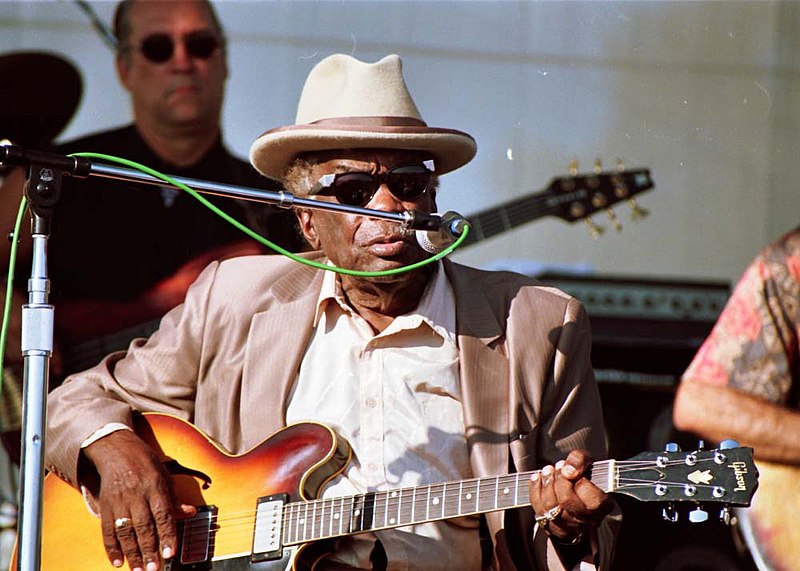
John Lee Hooker
Evolving from slave-era work songs and spirituals, the blues were invented in African American communities in the deep south. Blues is a very open style of music that can be played in many different ways. Over time, various styles emerged in different locations, and these regional variations would eventually form the basis of what would become Jazz, R&B, and Rock and Roll. Blues is the most important innovation in American music, and it has been massively influential to musicians all around the world, most notably, English musicians in the 1960’s such as Cream, Led Zeppelin, The Beatles, and The Rolling Stones.
Jazz:

Originating in the New Orleans area at the beginning of the 20th century, jazz is arguably the most profound American musical innovation, with just as much significance as European classical music. Jazz has of course evolved within itself many times over, with every evolution spawning even more musical innovations and innovators. While it’s true that jazz was influenced in a way by European classical music, it has also remained very distinct. Jazz is the medium that spawned several other forms of African American music, and each era of jazz left a significant mark on the development of American popular music. Let’s look at the various eras of jazz music and their effects.
Ragtime:

Scott Joplin
First heard at the very end of the 19th century, Ragtime music was a style of music innovated by freed slaves who worked in vaudeville. It was popularized by classically-trained pianist Scott Joplin. Ragtime music formed the basis for what would soon be called jazz.
Dixieland:
Invented in New Orleans at the beginning of the 20th century, what later became known as “Dixieland” jazz was a musical style played in bars and brothels in the Storyville area of New Orleans. Using musical instruments from European classical music, and influenced by the Blues, Ragtime, and various Latin and Caribbean music traditions, Dixieland jazz was the beginning of it all. One of the most famous musicians to come from this tradition was one of the most beloved entertainers of the 20th century, Louis Armstrong.
Swing:

Count Basie
Swing music started gaining momentum in the 1920’s with the musical innovations of people like Count Basie, Cab Calloway, Duke Ellington and Billy Strayhorn. Featuring large bands that played dance music, swing became the most popular American music from this time through the 40’s. In addition, the swing era brought a more broad, and white audience to jazz, and many white musicians were beginning to play jazz music. People such as Benny Goodman, Glenn Miller, Tommy Dorsey and Artie Shaw introduced swing music to this wider audience, and opened the doors for people like Frank Sinatra and Dean Martin.
Bebop:
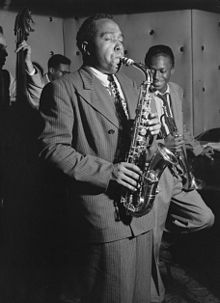
Bebop is an innovation within jazz that initially was exclusively played by black musicians. Bebop is credited for taking jazz away from popular music, and into more creative and innovative territory. Bebop is generally played very fast, and was not intended for dancing. It has even been claimed that bebop music was played so fast and with such virtuosity that white musicians could not play it. Some of the greatest jazz musicians who ever lived came from the bebop movement. Charlie Parker, Dizzy Gilespie, Bud Powell, Thelonious Monk, and Max Roach were masters of their instruments and legendary musical innovators.
Modal Jazz:
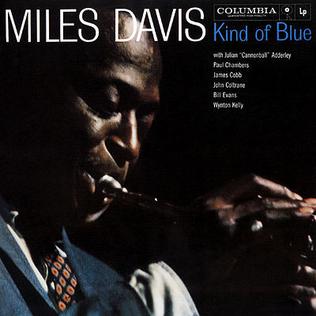
Kind of Blue
Before Modal Jazz, most jazz improvization was based on chord progressions. Modal jazz was based on modes (or scales), and shifted the emphasis of the music from harmonies to melodies. The most famous piece to come from the modal jazz movement was Miles Davis‘ groundbreaking “Kind of Blue“. Many of the musicians that worked with Davis on Kind of Blue and other sessions, including John Coltrane, Cannonball Adderly, Bill Evans, Jimmy Cobb, and Paul Chambers were also influential on Modal Jazz. Herbie Hancock was another major player who released several albums in the 1960’s that followed the Modal Jazz style.
Free Jazz:

In the late 1950’s musicians such as Ornette Coleman, Charles Mingus, and Cecil Taylor were playing a style of jazz that was rooted in bebop, but drew on on various forms of international music. In addition, this type of jazz relied less on the “rules” of tempo, timing, melody, and harmony. To some, the music was hard to listen to, and to others, it was a breath of fresh air. Free Jazz was very controversial, although an important piece in the evolution of Jazz. In the mid 1960’s, John Coltrane also began playing free jazz and led younger musicians such as Archie Shepp, Pharoah Sanders, and Sun Ra into the avant garde. Although not nearly as “free” as his later work, Coltrane’s 1964 album A Love Supreme is one of the most profound musical achievements ever recorded.
Jazz Fusion:

Herbie Hancock's Headhunters
Mix the musical innovations of Jimi Hendrix, James Brown and Sly Stone with people like Miles Davis and Herbie Hancock, and you have the birth of fusion–an electric version of jazz that drew heavily from rock, soul and R&B music. Innovated by Miles Davis on “In a Silent Way” and “Bitches Brew“, fusion became a powerful force in the Jazz world in the 1970’s. Groups such as Weather Report, Tony Williams Lifetime, Return to Forever, and The Mahavishnu Orchestra took the jazz, r&b, and rock world by storm with this eclectic blend of all three. Herbie Hancock’s classic fusion album “Headhunters” is one of the greatest works from the fusion era.
R&B:
Initially, R&B was more of a marketing term rather than a useful definition of a style of music. R&B was used to describe music (initially, at least) that was by African American musicians for an African American audience. The term came into existence during the Rock & Roll era, and it was a combination of jazz, blues, and gospel music–similar to rock & roll. In fact, some may claim that rock & roll and R&B music were the same thing, they just had different intended audiences.
Rock and Roll:
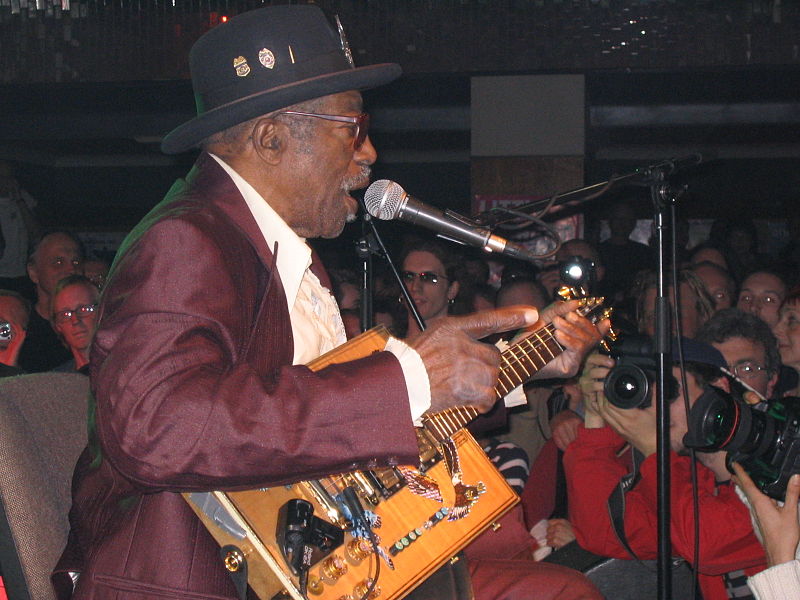
Bo Diddley
What became known as rock & roll music evolved from the blues, jazz, country, gospel and folk music. The earliest forms of Rock & Roll came from the late 1930’s and early 1940’s. People such as Big Joe Turner and Sister Rosetta Tharpe were probably the first to lay the groundwork for what would become rock & roll. The mid 1950’s is when rock & roll really began to gain attention. People like Bo Diddley, Little Richard and Chuck Berry were some of the most important figures in the early development of Rock & Roll, although the credit is usually given to Bill Haley and Elvis Presley.
Doo Wop:

Frankie Lymon
Rooted in African American vocal groups of the 30’s and 40’s, plus influenced by the blues and gospel, doo wop was one of the most popular forms of rock & roll/r&b in the 1950’s and early 60’s. The standout characteristic of doo wop music is vocal harmony. One of the most popular doo wop songs, and the one credited with the rise in popularity of doo wop was Frankie Lymon’s “Why Do Fools Fall in Love”? Other famous groups were the Monotones and the Diamonds. During it’s heyday, this particular style of music was very popular amongst the youth of America. Towards the end of the doo wop era, many musicians of Italian descent started to produce their own version.
Soul Music:
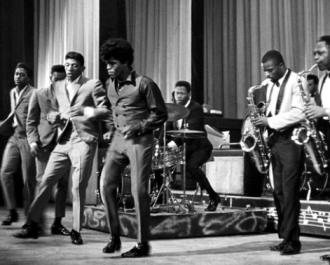
James Brown and the Flames
Soul music began showing up in the 1950’s as a combination of R&B, Doo Wop, and Gospel. This new style of music was yet another important innovation in American music. People such as Ray Charles, James Brown, and Otis Redding were some of the most famous performers to come from the soul movement. Soul, like many other styles of music had regional variants (Motown soul from Detroit, Memphis Soul, Chicago Soul), and has continued to evolve since its inception. The 1970’s were a very important time for soul as it moved towards a more socially conscious message. Marvin Gaye and Curtis Mayfield were some of the more visible figures in this movement, and the great James Brown laid it out beautifully with the classic “Say It Loud – I’m Black and I’m Proud”.
Jimi Hendrix’s Guitar Style:

Jimi Hendrix
Jimi Hendrix came from the blues, re-invented the guitar, and ended up being one of the most influential musicians of the 20th century. Ask any rock guitar player about Jimi Hendrix, and you’ll hear nothing but love. Contemporary rock music, while not dominated by African American musicians, owes its entire basis to Jimi Hendrix’s style. At the forefront of the psychedelic movement of the late 1960’s, Jimi Hendrix was the catalyst for Funk, Jazz Fusion, contemporary rock, and even heavy metal. Nobody played guitar like Hendrix, and after Hendrix, the guitar was never the same.
Funk:

George Clinton and Funkadelic
With people like Sly Stone, James Brown, and George Clinton came the birth of funk. Influenced directly by Soul, Psychedelic rock and Jazz, Funk was a new style of music that was based on these other genres, yet much more danceable. Funk was well-known for its high-energy, and over the top performances. Funk went on to be influential to disco music, and spawned a world-wide funk craze where musicians of all kinds wanted to create their own unique version of this energetic and electric music.
Rap:

Afrika Bambaataa
In the late 1970’s, after the Funk and Disco eras, a new cultural movement emerged from The Bronx in New York. This culture became known as the hip hop movement. DJing, MCing, beatboxing and breakdancing were all innovations that came from the hip hop movement. DJ Kool Herc and Afrika Bambaataa are often credited as the pioneers of the hip hop movement, and the music that came from that movement, which many people refer to as rap. Artists such as Grandmaster Flash and the Sugar Hill Gang were also important figures in the development of hip hop music. Since the early days of hip-hop, rap music has gone on to become some of the most popular music among young people, both white and black, and has spawned countless variations in the United States and across the world.
1980’s Pop:

Prince
In the 1980’s, a new sort of pop music was spawned from 1970’s soul and funk, plus a sprinkling of jazz, electronic, and rock to form music generally referred to as pop. Many of the performers who innovated this new kind of pop had also been a part of earlier soul and funk music. The biggest name to come from this era was Michael Jackson, although many others achieved massive commercial success during the 80’s, including Prince, Lionel Richie, Stevie Wonder, and Whitney Houston. 1980’s pop gave birth to the greatest selling album of all time (Michael Jackson’s Thriller).
Contemporary R&B:

Mariah Carey
Following the 1980’s pop era, several new styles of R&B began to emerge. All-male groups such as Boyz 2 Men, Blackstreet, and Jodeci dominated the airwaves and MTV during the early 90’s, and several all-female groups such as SWV, TLC, and also became popular around the same time. Several one-woman acts such as Mariah Carey, Mary J. Blige, and Lauryn Hill combined elements of soul and old-school R&B, along with more contemporary hip hop music into a new style of music that is still hugely popular to this day. Even over the past few years, some of the biggest musical acts in history perform this style of music: R. Kelly, Usher, Chris Brown, just to name a few.
Conclusion
As we can see, most of the musical innovations in popular American music are the products of African American musicians. In addition, their music has been profoundly influential on musicians all over the world.
Every time music hits your ears, take a moment to think about where it came from, feel it, and show some love.
-PEACE-
Join the Conversation: Post a Comment!
Topics: jazz, Music, R&B, R&B & Soul & Funk, Rock, Soul & Funk | 14 Comments »


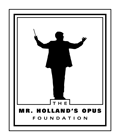
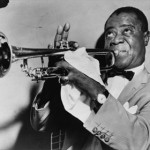
February 4th, 2010 at 9:28 am
Excellent piece. Thank you!
February 18th, 2010 at 11:10 am
Cool piece, but where’s House and Teechno? Just too many innovations to list I guess.
February 18th, 2010 at 6:47 pm
Haha, you’re totally right! I’ll try to get around to adding House and Techno. Seriously, is there any kind of popular music not invented by African Americans??
May 12th, 2010 at 5:15 pm
You’re splitting basically the same thing into time sequences. Blues, Jazz, Soul, R&B are the same thing, just evolved at different times and different places- recording technology, techniques, and progress of musical thought.
All races of Americans were essential pieces of any American music- because money is the only way these genres thrive… that is to say that rap music thrives because races other than African Americans support and purchase it. Sure, African American originated these sounds. But its just so much more complex than that. The politicians who chose districts of New Orleans to be “hooker” districts also created a place for Jazz to thrive…
The legendary “Blue Note” record label was not started by blacks. I only want to point out that people in general were what made this music, its not a “racial thing” its a community thing. People’s hard earned money fed these genres, and without that support these musicians would have starved and played other accepted styles. So…
In addition, I can’t believe you didn’t mention Jamaican Dub music… like the previous commentary mentions, House and Techno, Breakbeat, Hip-Hop, Drum and Bass, and Dubstep/ other popular European electronic styles are built upon the foundation of Reggae Dub- that is “X-Raying” a popular or known track into drum and bass, and manipulating or introducing various tracks within a mix with reverb, phaser, delay, etc.
PLEASE LOOK UP: DJ Kool Herc. This is where hip-hop comes from, breakbeats and Reggae-Dub- from a Jamaican immigrant.
December 3rd, 2011 at 1:56 am
for house and techno there is only one band to metion : Kraftwerk !!!!
February 3rd, 2012 at 6:10 pm
Remind me again as to why we have to thank African American people for rap? If anything we should be asking them to take it back from whence it came.
February 3rd, 2012 at 10:05 pm
Rap may not be to everyone’s taste, but it is an important musical innovation. While it’s true that there is a lot of rap music with little value, it’s also true that there are some excellent rap albums with unique musical ideas and important social messages.
May 26th, 2012 at 1:17 pm
You forgot Techno also invented by blacks and it’s huge in every county in the world
May 26th, 2012 at 3:13 pm
Yup. Somebody mentioned that in another comment too.
July 4th, 2012 at 5:17 pm
Great article, I would hate to think what modern music would be without the influence of African Americans.
@ Jules (I know the comment is two years old, I don’t care), why would the article mention Jamacian Dub when it is about African Americans in music, not Jamaicans.
n.b. Drum & Bass and Dubstep both originated from the UK not the US.
And, f*** those White politiciand you speak of, pay your respects to the innovative N.O. musicians of African descent that laid the foundations. Again, did you misread this article, it is about the music itself not the scene or industry that surrounded it at the time.
It was a racial thing!
January 5th, 2013 at 8:51 am
Methinks what these numerous posts prove is that music is a continuum. Arbitrary classifications (or divisions)only set a time frame; everything that proceeded, influences everything that follows.
In the brilliant words of the Duke, when pressured by reporters to compare Jazz and Classical Music,”If it sounds good, it is good.”
February 26th, 2023 at 5:47 pm
Those DJs have never been credited for “Rap” because they didn’t rap. “Rap” has a history before hip hop and was added as an element later. But hip hop style rap is credited to DJ Hollywood(Father of Hip Hop Rap Style) DJ/Father MC Coke La Rock, Melle Mel, Rakim (God MC) and MC Sha Rock (First Lady MC)
Hip hop is a Bboy subculture NOT Rap.
February 26th, 2023 at 6:15 pm
FYI: Break beat deejaying was developed by disco deejays and the proto disco deejay setup that includes two turntables and a mixer.
Hip Hop is a Bboy subculture that uses funk break beat deejaying to accommodate breakdancing (referred to as Bboy deejaying)THIS IS NOT JAMAICAN CULTURE.
Early funk break deejays include Grandmaster Flowers, DJ Pete Jones, DJ Kool Dee, Tyrone the Mixologist
Early Bboy deejays with break dancing (Hip Hop) include, DJ King Mario and the Black Spades(later became the Zulu Kings) DJ John Brown, DJ Smokey and the Smokatrons, then Afrika Bambaata, Kool Herc, Grandmaster Flash, Grandwizard Theodore
Although Kool Herc is credited for the first DOCUMENTED Bboy party he has NEVER been credited for creating break beat deejaying. He is credited for popularizing Bboy deejaying/dancing in rec rooms and nightclubs (1520 Sedgwick is a indoor rec room)
But Hip Hop subculture started OUT IN THE PARKS, connecting Deejay equipment to light poles for electricity. The ORIGINAL Hip Hop Bboy culture was ORIGINATED by DJ King Mario (known as the First King of Hip Hop) and the Black Spades, that later became the Zulu Kings (Charlie Rock) and then the Zulu Nation (Africa Bambaata)
February 27th, 2023 at 9:45 am
Hip Hop≠Rap
Hip hop is a Bboy subculture that includes Emceeing
A few DJs and MCs are missing: DJ King Mario, DJ and Emcee Coke La Rock, and Grand Wizard Theodore. These DJs are well known founders of the culture.